ARRL The National Association for Amateur Radio® (ARRL®) and Radio Relay International® (RRI) have signed a Memorandum of Understanding (MOU). [PDF] The formal agreement, signed by ARRL President Rick Roderick, K5UR, and RRI Board Chairman James Wades, WB8SIW, outlines the value the organizations find in cooperation.
SEE THE JOINT PRESS RELEASE [PDF]
ARRL, established in 1914, is the nation’s leading advocacy organization for the Amateur Radio Service. ARRL’s mission is to promote and protect the art, science, and enjoyment of amateur radio, and to develop the next generation of radio amateurs. ARRL’s 71 Sections across North America promote public service with ham radio through programs including the Amateur Radio Emergency Service® (ARES®) and the National Traffic System® (NTS®).
Radio Relay International® (RRI) was established in 2016 to enhance and promote effective nationwide messaging and emergency communications capabilities. Since its founding, RRI has developed an extensive work product consisting of a wide variety of training programs, a tested and evolved National Response Plan, and communications facilities designed to better prepare radio amateurs to serve their community in time of emergency. Central to these goals has been modernization of the NTS.
Both ARRL and RRI recognize the importance of effective public service and emergency communications, including the shared goal of modernizing and enhancing the National Traffic System. “Coordination between our two organizations will prevent duplication of efforts and ensure that both the public and emergency services agencies have access to effective NTS disaster communications facilities,” said James Wades, Board Chair and Emergency Management Director for RRI.
The National Traffic System, created by ARRL in 1949, is a network of trained amateur radio operators who ensure the rapid transmission and relay of messages, or “traffic.” In addition to basic voice and Morse code or “CW” communications networks, the NTS has recently been modernized through the addition of the Digital Traffic Network, as well as interoperable messaging gateways and specialized software templates developed in association with the Winlink Development Team, which operates an international radio email service well-suited to disaster response.
“Through last year’s hurricanes and the recent devastating floods in Texas, we’re seeing amateur radio continue to be a vital tool before and during times of crisis,” said ARRL Director of Emergency Management Josh Johnston, KE5MHV. “Amateur radio works When All Else Fails®, and traffic handling is an important part of that,” he said.
Future plans for the improvement of NTS include the development of additional robust HF digital networks, improved interoperability with local and state emergency communications organizations, and continued development of local and regional VHF and UHF digital “packet radio” network capabilities. Coordination between RRI and ARRL will play an important role in achieving these goals.
www.arrl.org/nts
www.radiorelay.org
For more information contact:
James Wades, WB8SIW, Radio Relay International Board Chair radiorelayinternational@gmail.com and/or Sierra Harrop, W5DX, ARRL Public Relations and Outreach Manager sharrop@arrl.org.

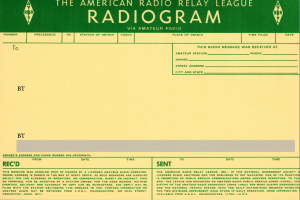
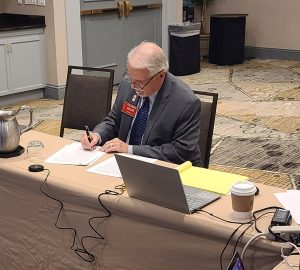
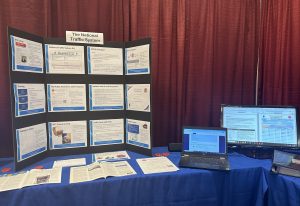
 Many Technician class amateurs miss out on fun and skills learning of traffic handling because they reside in areas of the country where local traffic nets on VHF repeaters don’t exist. The Virtual NTS Training Net (
Many Technician class amateurs miss out on fun and skills learning of traffic handling because they reside in areas of the country where local traffic nets on VHF repeaters don’t exist. The Virtual NTS Training Net (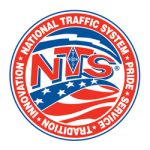 Interested in NTS and Traffic Handling? Join us Monday, October 14 at 7:00 PM via Zoom. This training will incorporate videos and open discussion to get you started in an exciting aspect of the hobby that’s been around for over 100 years!
Interested in NTS and Traffic Handling? Join us Monday, October 14 at 7:00 PM via Zoom. This training will incorporate videos and open discussion to get you started in an exciting aspect of the hobby that’s been around for over 100 years! Looking for help on subscribing to The NTS Letter? We’ve included easy-to-follow instructions at
Looking for help on subscribing to The NTS Letter? We’ve included easy-to-follow instructions at  NTS traffic net operation will be prominently on display at the 2024 Northeast HamXposition and New England Division Convention, on Saturday, August 24 at 2:45 PM. John Gotthardt, K1UAF, will operate remotely as net control station at the Nashua Area Radio Society exhibit for a session of the First Region Net. All are welcome to visit the booth and observe how formal message traffic is passed on the air.
NTS traffic net operation will be prominently on display at the 2024 Northeast HamXposition and New England Division Convention, on Saturday, August 24 at 2:45 PM. John Gotthardt, K1UAF, will operate remotely as net control station at the Nashua Area Radio Society exhibit for a session of the First Region Net. All are welcome to visit the booth and observe how formal message traffic is passed on the air.
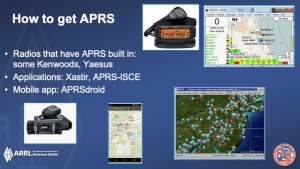 You can now use APRS to send a radiogram through the NTS gateway.
You can now use APRS to send a radiogram through the NTS gateway.